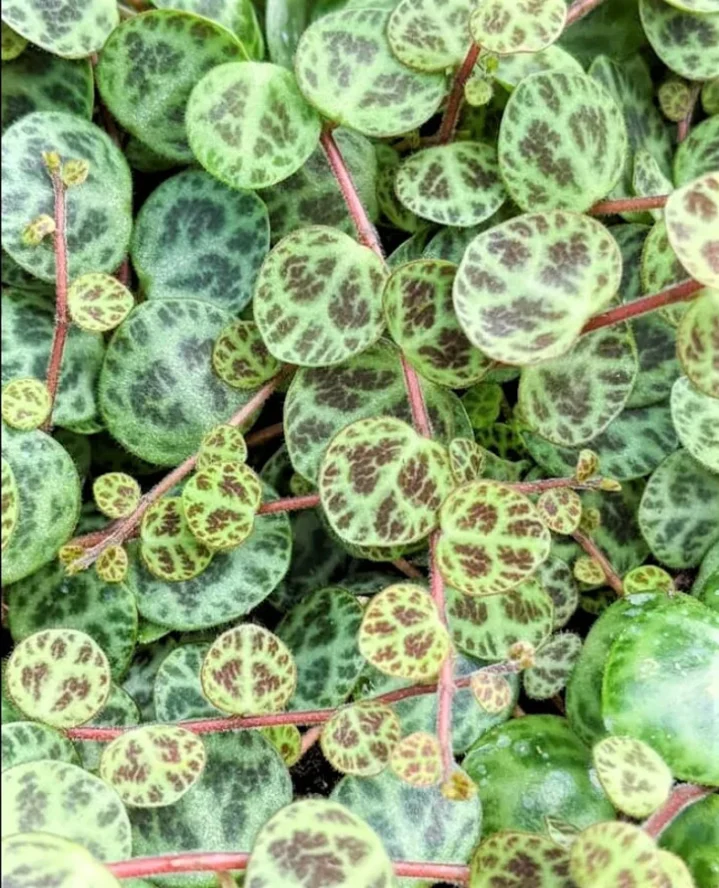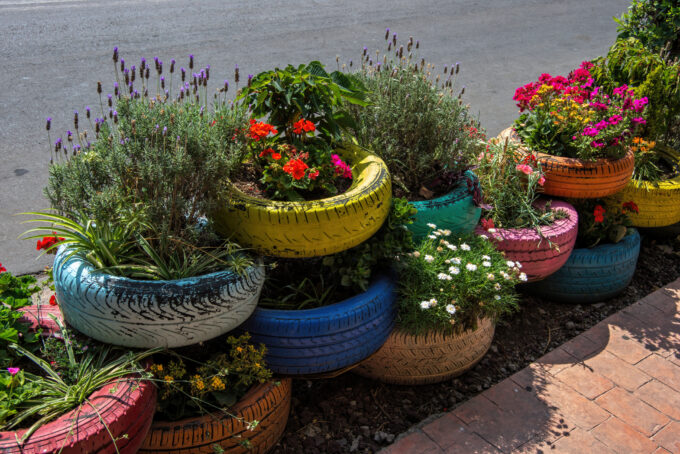There are many ways to improve your living area. One is a beautiful string of turtles as part of a houseplant collection. Get the green view you always wanted in your living area. Scientifically known as Peperomia prostrata, these plants bring a magnificent view that can be amazing for people who love plant collection in their homes.
A string of turtles, are plants native to the Brazilian rainforest. These plants flourish well under warmer and moist environments. The plants also require bright, indirect light to grow well. They can provide a magnificent view in the house when well maintained.
Keep reading this article to understand the String of Turtles and how to care for and grow the plant indoors.
About String of Turtles
This tiny succulent thrives well in warm climates but can also adapt well to average home conditions. For this reason, it has become very popular for houseplant collections.
The String of Turtles does not grow in the soil but is well adapted to hanging from trees and trailing across rocks. The plant produces thin, vine-like stems that are usually light green. It can reach a foot in length with tangled stems and is littered with small leaves.
To sustain their growth, the plants love bright, indirect sunlight. Like other plants that do well in indirect sunlight, exposure to full, direct sun will damage the plant’s leaves and cause discoloration. It is, therefore, important to place the plants in an environment conducive to their growth.
The plants have become popular because of their leaf pattern: dark green with light green to silvery veining reminiscent of a turtle shell, hence the name.
Quick Care Overview
| Common name | String of turtles |
| Scientific name | Peperomia prostrata |
| Family | Piperaceae |
| Origin | Brazil |
| Soil | Well-draining mix |
| Growth rate | Slow |
| Temperature | 68 – 75F |
| Sunlight | Bright indirect sunlight |
| Soil type | Moist, loamy |
| Pests | Mealybugs, spider mites |
| Diseases | Root rot |
Caring for your String of Turtles
When properly cared for, Peperomia prostrata can be a magnificent houseplant collection. Maintaining succulents will take extra effort and adaptations from the usual methods. To ensure that the plant grows in a favorable environment, the following factors must be considered:
Light and temperature
The String of Turtles is used to growing under the canopies of tall trees in its natural rainforest habitat. This means the plant is not well adapted to receiving high levels of direct sun as it only requires less sun to thrive. The plant can do well within the house next to a window where there is no windowsill space. It can grow fine under artificial lighting.
Keeping these plants in full sun for an extended time will damage the leaves, but also, in too little light, the plants may fail to produce new growth. While this plant is not friendly to cold weather, it can do well at room temperature. It will not have any issues relating to its growth in higher temperatures. Keeping the temperature between 68 to 75 degrees Fahrenheit will make the plant thrive. Though, exceeding this temperature to higher levels will be a disaster for the plant.
Water
Being native to the South American forest, this plant prefers moist conditions. They can easily suffer from overwatering more than they do in dry conditions. Strings of Turtles are highly adapted to high air humidity since their roots are not well evolved to be covered with wet soil. Well-maintained soil composting can help achieve garden success.
Having drainage holes in the pot and letting the soil dry out between the waterings is important. This will help the plant thrive well without experiencing any issues relating to overwatering or under watering that can lead to leaf discoloration.
To ensure the plant grows well, overwatering should be avoided by drenching the soil till water runs out of the bottom of the pot and the soil is adequately moist. The plant should not be watered again until the top two inches of soil has dried out.
Fertilizer
Like other plants, using fertilizer is important in providing the Peperomia prostrata with sufficient additional nutrients and protecting it from possible pests and disease infection. Using houseplant fertilizer on the plants will help them maintain a bright shiny vigor and ensure the plant maintains its leaves’ color and patterns throughout the growing season.
Pests and Diseases
Like other houseplants, this plant can be infested with usual pests such as spider mites, mealybugs, and whiteflies due to overwatering. Any yellowing, discoloration, or slow growth is due to its fickle nature. The plant can also start to lose its pattern from under watering, overwatering, or failing to get enough nutrients from the soil.
Pruning
If these plants are not pruned regularly, they can develop a leggy appearance that may affect their growth over time. Frequent pruning is essential to remove dead and damaged stems and leaves and prevent unwanted growth. This will ensure that they experience new and more vigorous growth to flourish.
Propagation
This type of peperomia is straightforward to propagate in water. There are careful steps that should be followed for successful propagation.
For successful propagation, here are a few quick steps to follow:
- Clip off and prepare some cuttings
- Prevent stagnation by changing the water after some days
- Transplant the cuttings into the soil when the root growth is visible
- Allow water to dry and reach a moist level gradually
- Expose the plant to bright, indirect light
- Keep the soil moist
A String of Turtles can be a magnificent houseplant collection. When properly cared for, the plants can also be gifted to friends or colleagues. The plant requires bright, indirect light for sustainable growth and to prevent leaf damage and discoloration. For this reason, growing this plant requires proper care by maintaining the required temperature, humidity, and sunlight. The plant is susceptible to pest infestation, and under watering or overwatering can affect its growth. Proper care tips should be followed when growing this plant to ensure it flourishes.
popular posts
- 1It’s Black Business Month, So Let’s Go Shopping and #BuyBlack!
- 2These Home Decor Items Will Instantly Make Your Space Look Outdated
- 3Black-Owned Home Decor Stores To Support Across the United States
- 4A Look Inside Elon Musk's Tiny $50,000 House
- 57 Black and Multicultural Designers To Follow For Design Inspo
Spaces
Whether it’s luxury or ease, every area of your home should be as fabulous and unique as you.

Give Your Yard a Glow Up for Spring + Tips from a Pro!
by Melody Beuzelin | March 15, 2023
FOLLOW ALONG ON INSTAGRAM
#homeandtexture
Find us on social for more home inspiration where culture, personal style, and sophisticated shopping intersect to help you create a home where you love to live.







